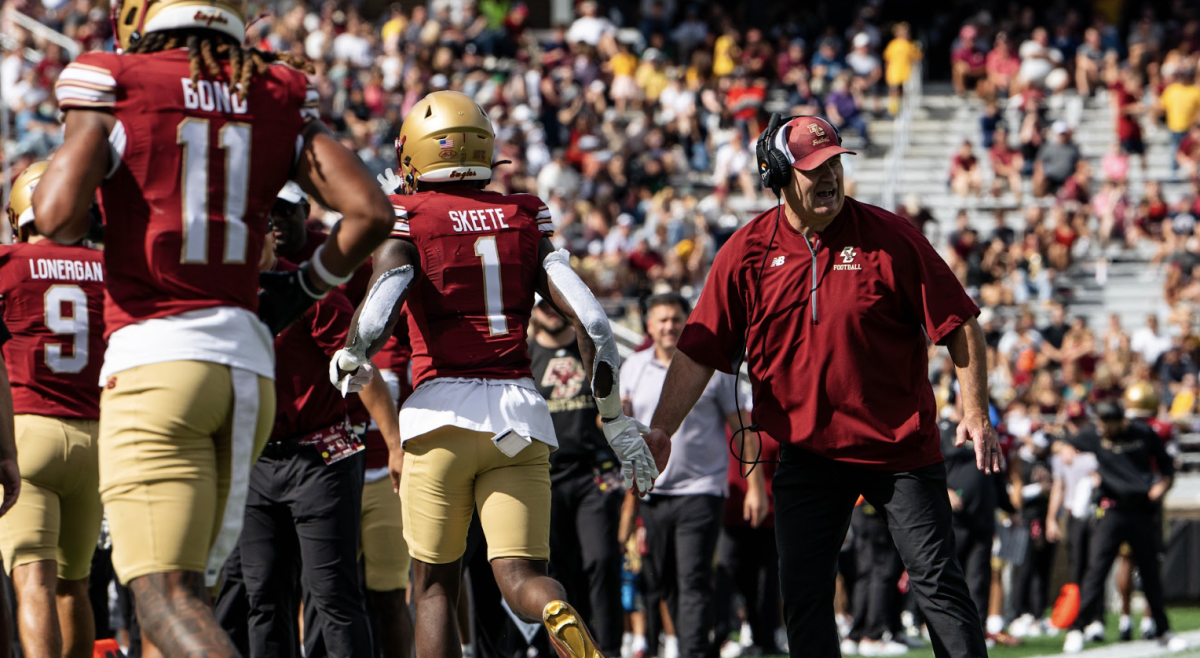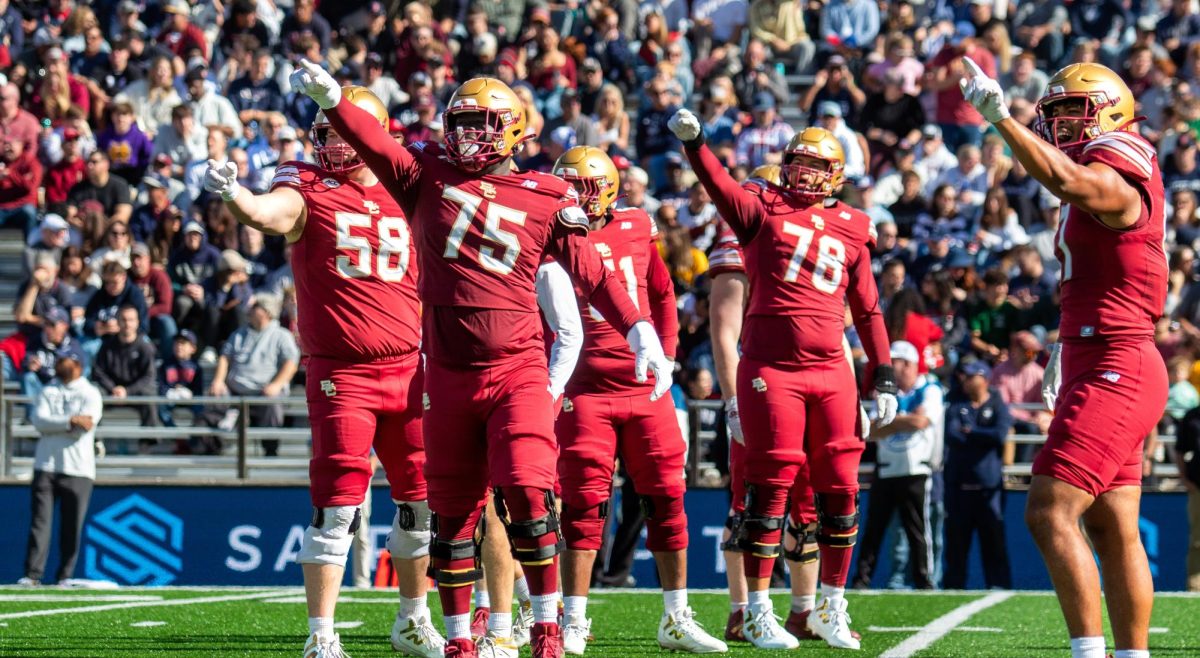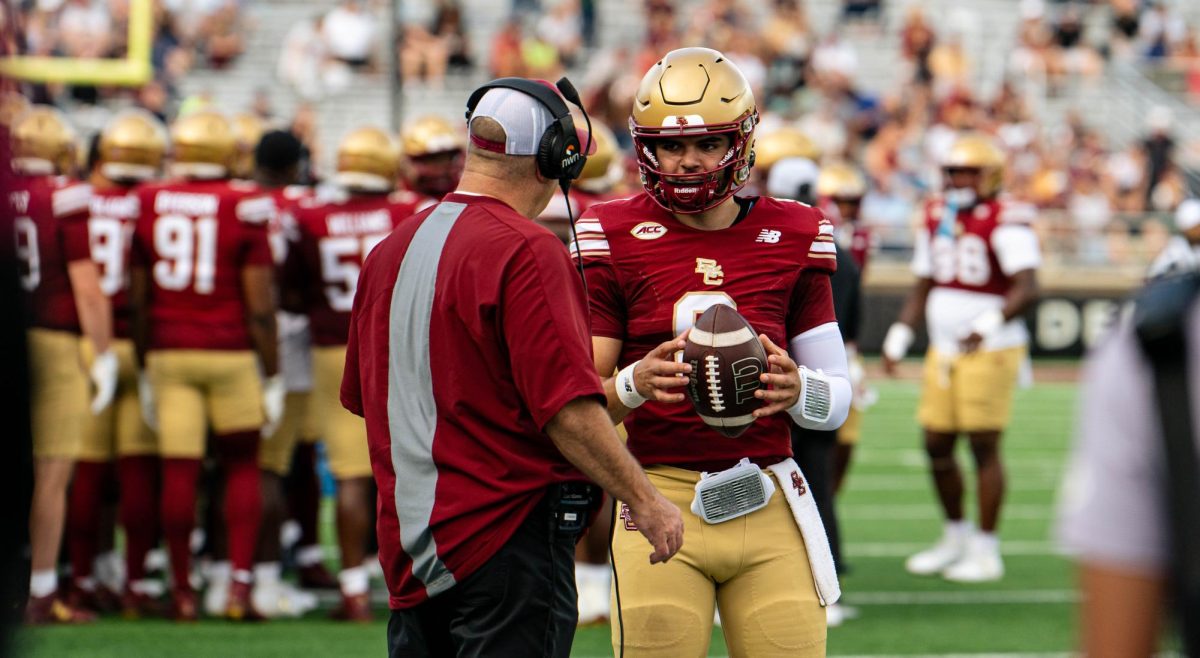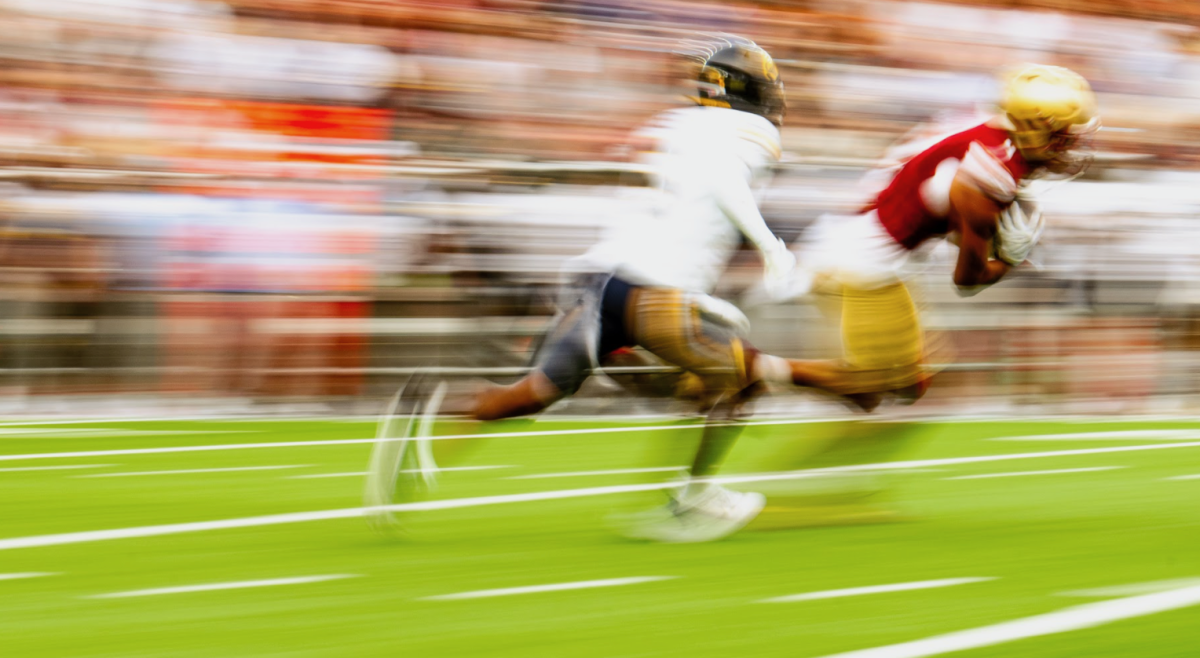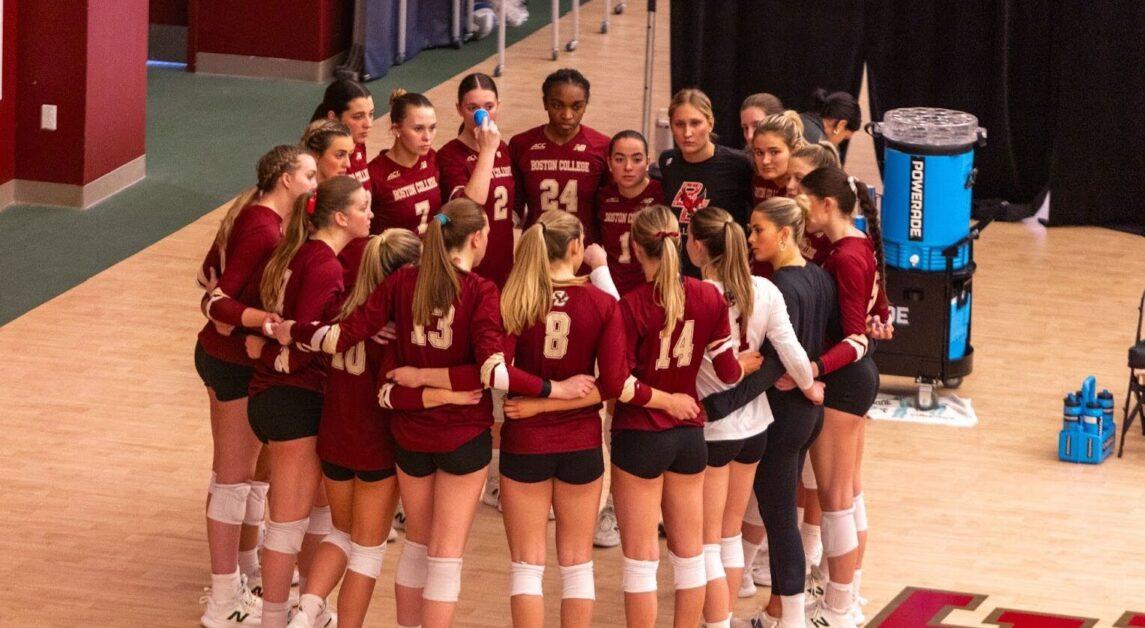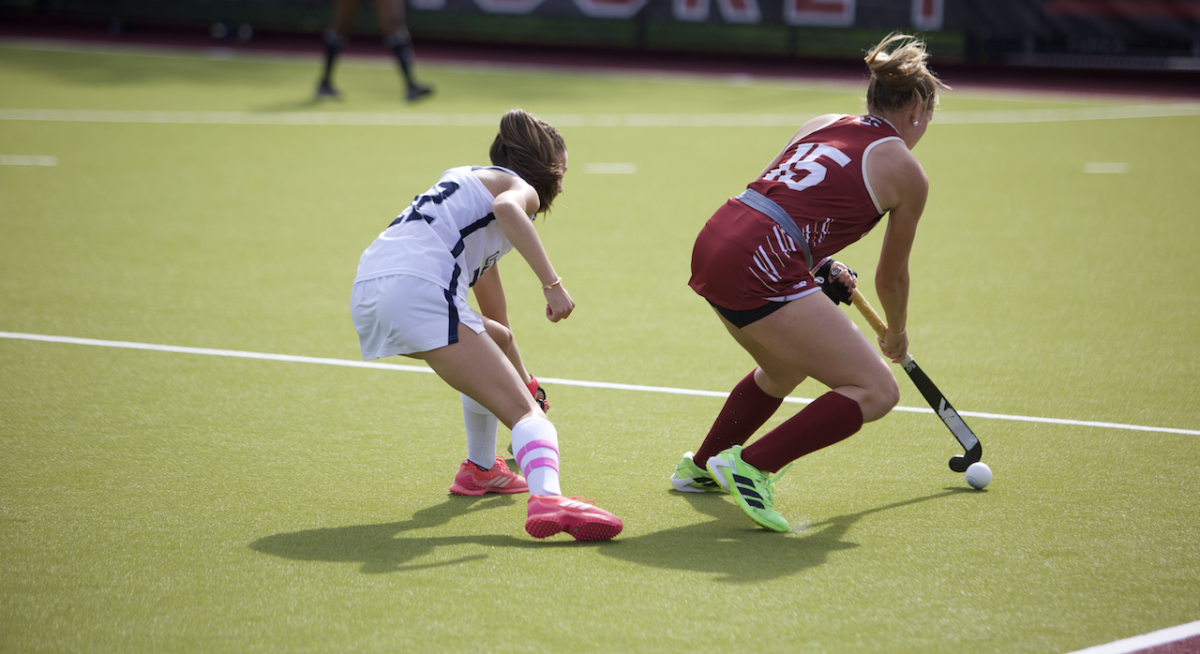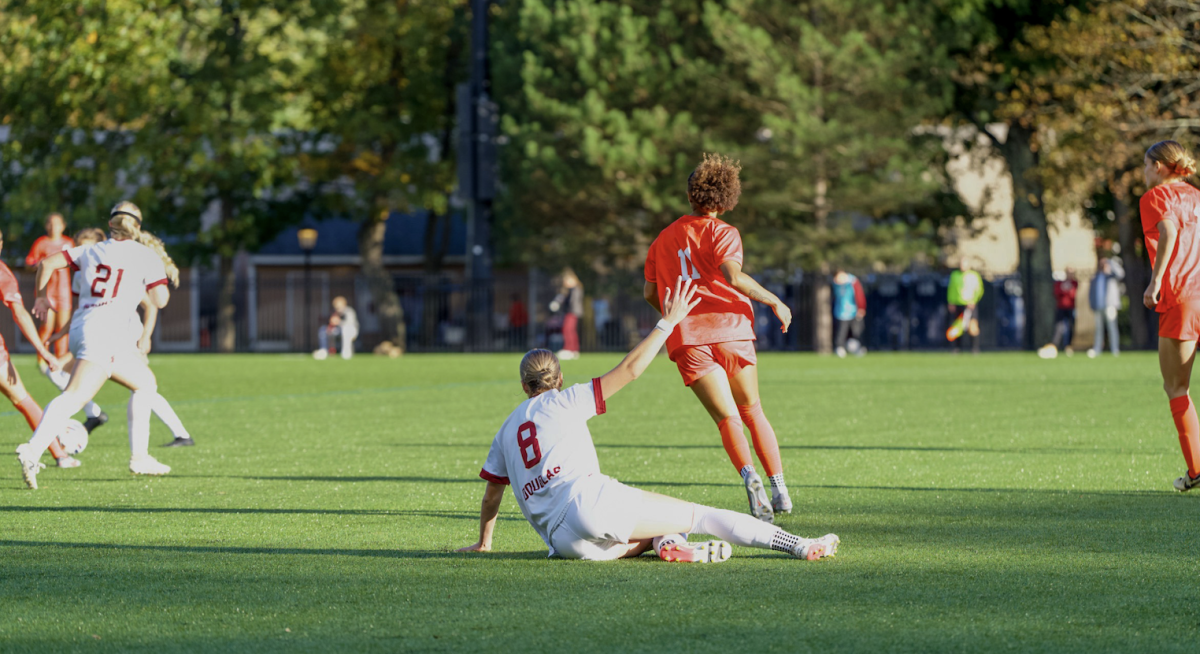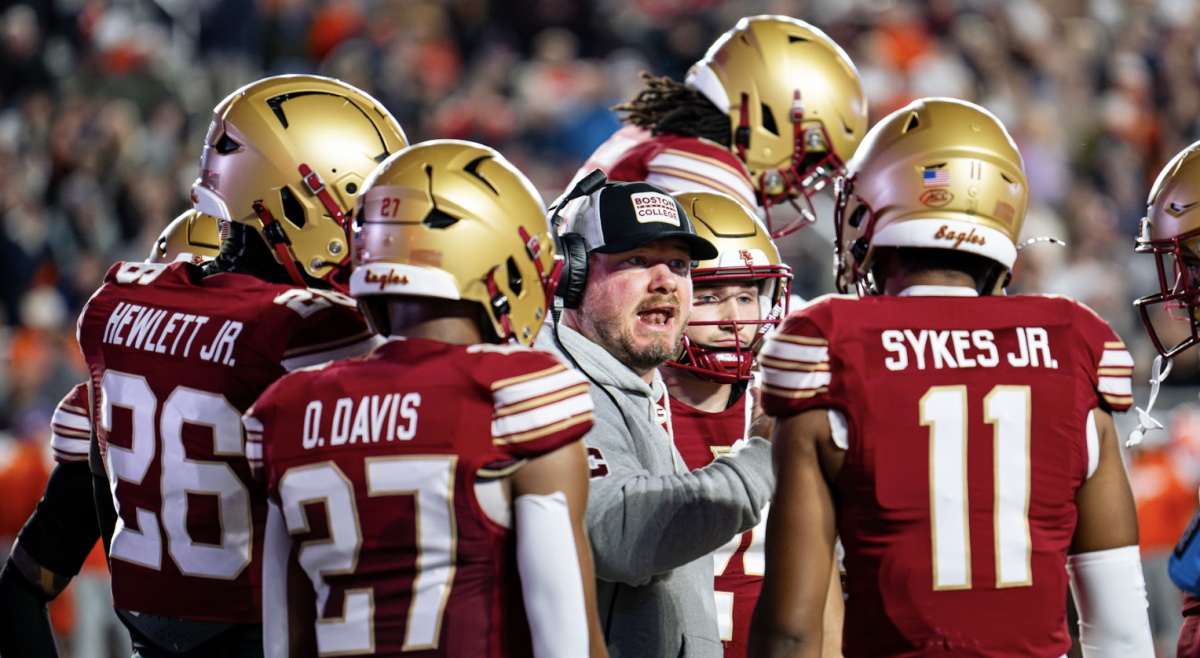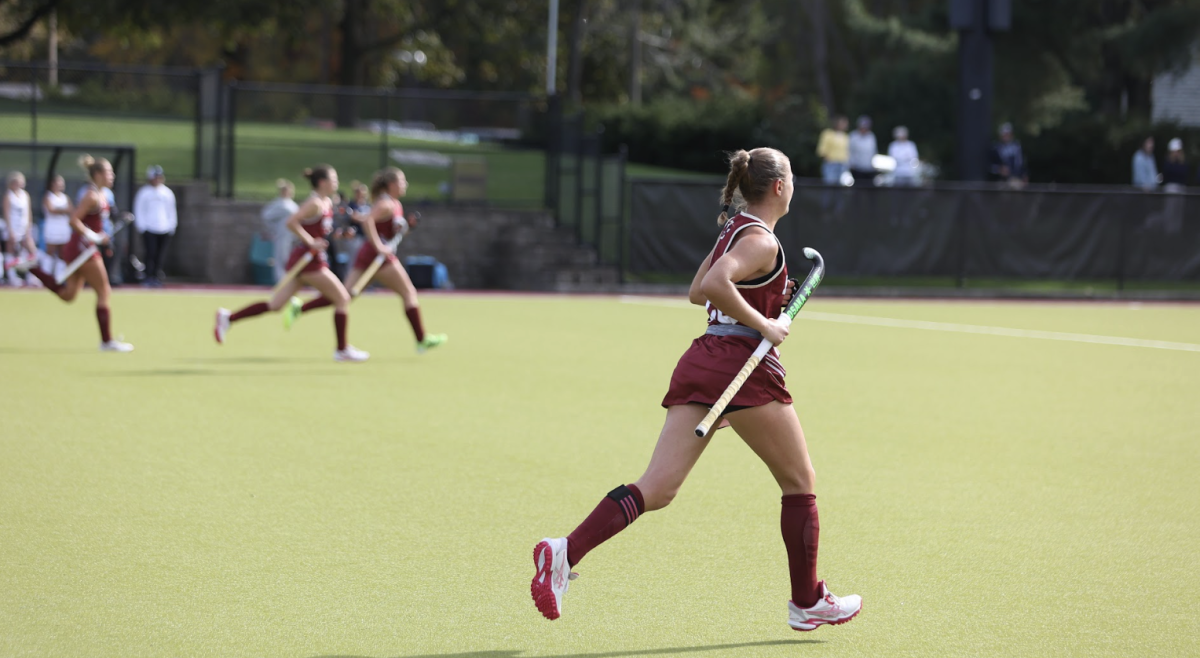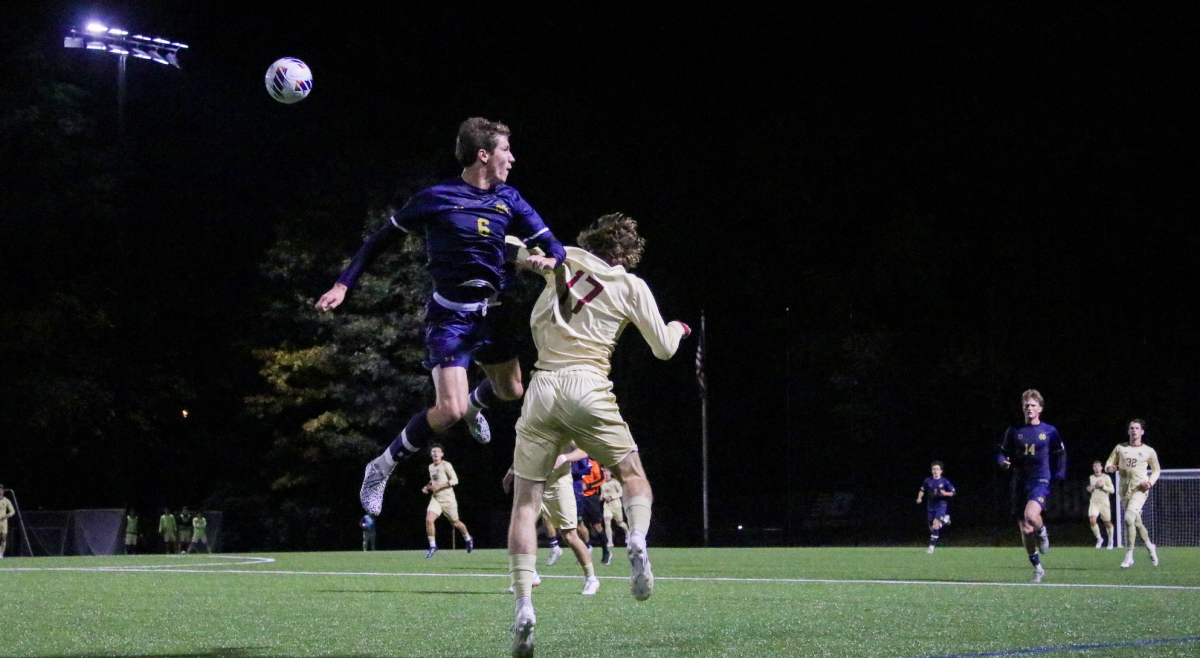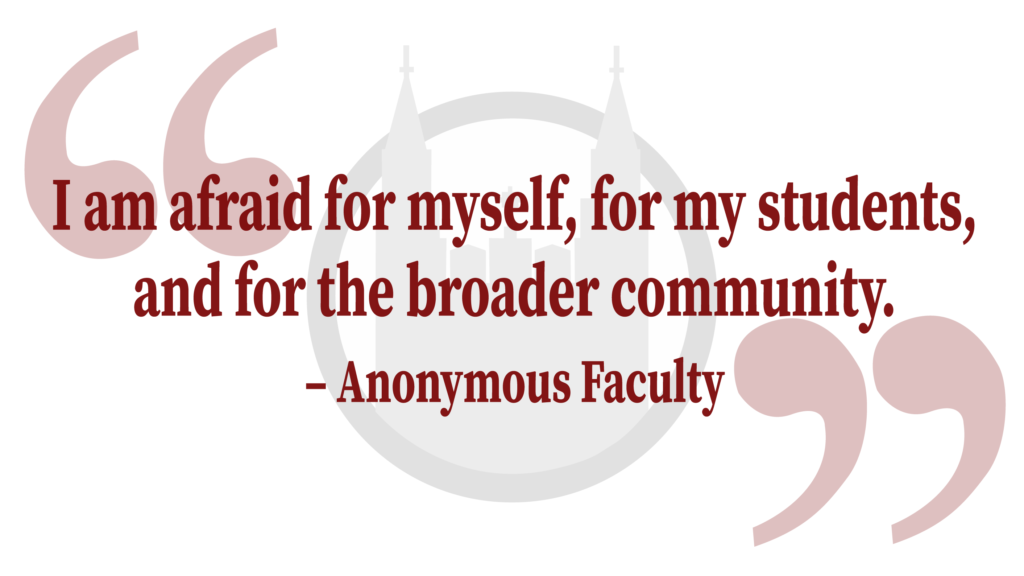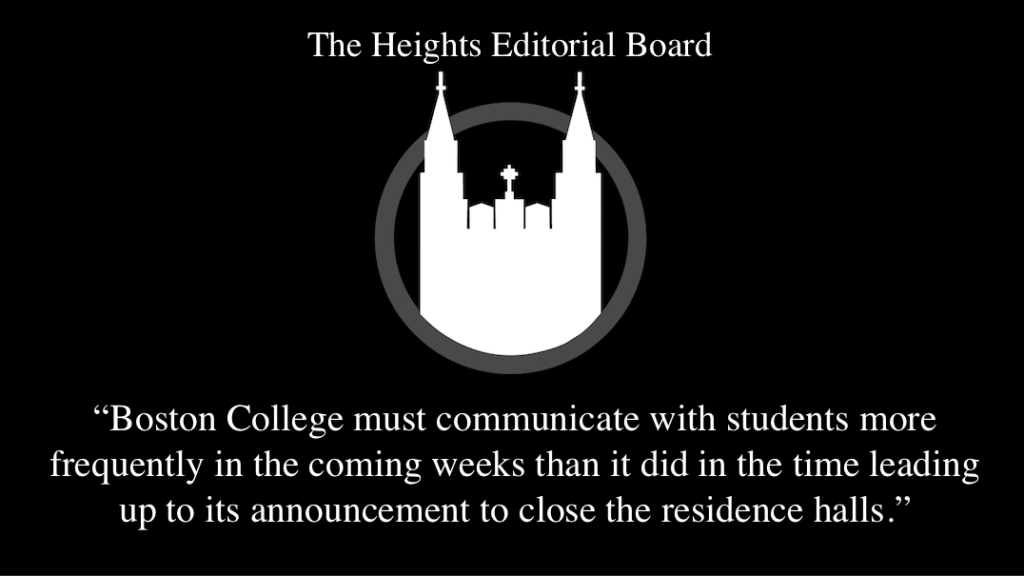The Uber driver dropped me off next to the Harvard Coliseum with 40 minutes until the game started. I was early, so I walked around that monument to the hubris of a different era—a time when Teddy Roosevelt made the rules and the Ivy League school was a perennial contender for the national championship. Looking at the stone arches and the rickety metal gates, I imagined what it would have been like to watch the ol’ boys take the field against rivals Yale or Princeton.
But I was there for a different sport in a different age. I wandered around the Harvard athletics complex for about 15 minutes before a kind Harvard athlete took pity on my lost soul and directed me to the field hockey pitch. For a school that places so little emphasis on sports, they sure do have a lot of fields, tracks, and buildings.
With about 20 minutes until the game, I walked up the stands, past a handful of parents, to the press box. Climbing the ladder onto the roof, I set up a forgotten table and dew-covered chair to create a perch from which I could survey the field. In 15 minutes, I needed to learn something about field hockey. Until assigned this story, I am not sure that I knew there was a version of hockey that was played on land. I had certainly had never witnessed it.
Lesson No. 1 of the evening: There is, and it takes more time than I had to understand. Oh, well. I like to learn on the go.
Both teams were still warming up, and those warm ups were surprisingly reminiscent of soccer. Feed the ball, make a run, receive the ball, shoot. Rotate through the lineup. Repeat.
Lesson No. 2: Field hockey is kind of like soccer.
With the game about to start, I sat down, opened my laptop, and tried to make some sense of the sheet I was handed upon walking into the press box. I put it aside—it probably wasn’t that important. Rather, I thought I should try to understand some of the markings on the field. It looked mostly like a soccer pitch with a couple of extra lines and an odd semi-circle at the each end of the field. Perhaps it was a penalty box of sorts, except in a semi-circle? I was presented with a dilemma—how to reference the thing. I couldn’t call it “the box,” as one would in soccer, so I settled on “the semi.” Made sense to me.
Lesson No. 3: When you don’t know what the markings on the field are, the best course of action is to make something up.
The tip-off/kick-off/whatever-you-call-the-start-of-a-field-hockey-game-off occurred and the players were off like a pack of gazelles, weaving through the savannah. Not even a minute had ticked off the game-clock when Boston College stole the ball, slithered down the left side of the field unmolested, passed it into the semi, and snuck it in past the goalie. They were moving onto the next thing, and, meanwhile, I couldn’t even tell who had scored. How does anyone read the numbers on the backs of their uniforms? The press box is so far from the field … or I’m losing my vision.
Lesson No. 4: I am going blind. I should get that checked.
Thankfully, the announcer told both the audience (and your uninformed correspondent) that it was No. 19 who scored with an assist from No. 6. Then I understood what that sheet was for. It conveniently told me that it was junior forward Kelcie Hromsin from Larksville, Pa., graduate of Wyoming Valley West high school, who scored the goal, and sophomore midfielder Emily McCoy from Lancaster, Pa., graduate of Penn Manor High School—and the team leader in goals for the season—who assisted.
Lesson No. 5: Pay attention to the material they hand out to you in the press box. It can be useful.
Harvard came back strong after this and, although the Eagles had greater control over the ball when they possessed it, possession itself was tightly contested. Not long after BC’s goal, Harvard stole the ball near the half, drove it downfield, and let one rip at BC’s goalie with a shot that looked suspiciously like my golf swing.
Lesson No. 6: I need to work on my golf game.
Thinking about golf, my mind drifted to the equipment used in this game. I found it odd—it was more like an extra-wide wooden golf club than a ice hockey stick. They were hitting the ball, “not with a straight stick, with a little f—ked up stick,” as the late Robin Williams would say. While I was considering that, the game continued its forward march, and possession likely changed back and forth several times, leading to my next lesson.
Lesson No. 7: The game moves fast—if you don’t stop and look around once in a while, you might miss it.
For the rest of the half, BC and Harvard exchanged possessions like upper class ’20s co-eds traded dance cards … liberally. Harvard made a couple of forays into BC territory and was quickly rebuffed. I wondered whether it had plays … you know, the Wildcat offense, the Flying V formation, s—t like that. I was thinking that they should have tried the Schlieffen plan, a pincer maneuver (I’m not even sure how that could apply here, but, hey, it might work), a Blitzkrieg, a feint-left-attack-right, shock-and-awe tactics, and the like. Perhaps even pull an Operation Mercury (where I thought they would have gotten the parachutes … and the helicopters … and the island to land on I have no idea). Maybe use some scorched earth tactics on defense (At this point, I really have no idea how I thought any of this would work—my free association was running wild. Plus, I am sure that Harvard would have been none too pleased to find their pitch on fire).
Lesson No. 8: I need to keep my free association in check.
The half wound down uneventfully with BC sending the ball out of bounds at the far end of the field in what I supposed was an intentional-grounding, kneeling-the-ball, running-out-the-shot-clock sort of maneuver. And it was halftime. I decided that it would be best to walk around before I sat glued to my seat for another 35 minutes (sidebar: what is the deal with that? One hour, a half hour, a quarter hour, even three-quarters hour, these were all reasonable divisions of time employed in other sports. I could not figure out how they got to 35 minutes. I also could not figure out what the deal was with the skirts. It seemed like gender-normative repression to me. After all, the men don’t wear skirts. I thought we had gotten rid of that in sports).
Lesson No. 9: Gender-normative dress for sports is not dead.
By the time the second half started, the temperature had dropped noticeably since the start of the game, and the wind was biting at your underdressed correspondent. Now familiar with the pace and flow of the game, I tried to acquaint myself with some of the nuances. I still could not decipher the mysterious hand signals and body signs made by the referees/umpires/officials/whatever-you-call-the-game-overseers. I had to base my understanding of who committed the foul on which side groaned and which side cheered. I thought they could really have used an interpreter out there—a Roland Barthes-esque reader of signs.
Lesson No. 10: Bring a cheat sheet to officials’ motions to future sporting events.
Harvard was showing real improvement in its control of the ball and made some serious jousts into BC territory, but BC quickly parried them and executed clever ripostes that put them deep into Harvard territory. About 10 minutes into the second half, BC had the opportunity for a penalty of some sort. I had seen these in the first half and wondered what they were (I later found out that they were called penalty corners. Fitting). Before play resumed, each team had a little conference. I wondered what they were discussing. Well, Smith, you go right and I’ll go left. And, Jones, you need to secure the right corner of the goal. Guard it like a snow cone on a hot summer day. They really packed people into that goal—it was as crowded as a Hillside elevator five minutes before classes start. From my vantage point, it looked like BC scored, but it wasn’t so.
Lesson No. 11: Remember Lesson No. 4. Bring binoculars.
One thing that was most notably not like soccer was what happened when a player hit the ground. After watching a World Cup in which it was expected that players be actors and make a scene for the smallest touch, it was encouraging to see that there was no funny business on that field. When a girl went down, it wasn’t but a few seconds before she was back on her feet and in the game.
Lesson No. 12: Soccer players—wimps. Field hockey players—resilient. ’Nuff said.
The rest of the half saw a couple of good plays, but nothing too exciting. Some good drives by Harvard, a close miss by BC. There seemed to be a lot of little skirmishes over the ball on the far side of the field, reminiscent of the minor dogfights of the gentlemen-pilots of World War I. As the clock wound down (and I was starting to concern myself with what on earth I was going to ask the coach after the game), Harvard made a couple last thrusts into BC territory, controlling the ball all the way into the semi, but BC was able to deflect it from the goal until the clock hit zero, winning the game one-nil.
Lesson No. 13: Fencing terminology is applicable in almost any sport.
As the players left the field, I shoved my computer into my bag and shimmied down the ladder back into the press box, looking for the sports information director so I could talk to the coach. I still wasn’t really sure what I was going to ask her, but I figured with the ACC championship next week and BC’s lackluster performance against an inferior team, there was something to work with there.
Waiting for the coach, I chatted with the SID, who gave me some additional background on the team’s performance throughout the season. After everyone else had cleared the field and another five minutes had passed after that (which gave me much-needed time to formulate some questions), BC head coach Ainslee Lamb made her way over toward us, probably somewhat surprised to find a Heights correspondent at an away game.
“I think the kudos goes to Harvard tonight,” Lamb said. “I thought they played a tremendous game … I think, tonight, Harvard had more desire to win that game … The great thing about that is that’s all controllables … I know that one of the strengths of our program is our work rate, how aggressive we are, how the will to win, those are all intangibles I know we have—we just have to get back to allowing them to come on the field a little bit more.”
Looking ahead to the ACC tournament, Lamb noted that the conference has been very strong this year and predicted that every game would be decided by one goal. BC will face No. 7 Syracuse in the first round next week, which could pose a challenge for a team that has yet to win a single tournament victory.
Lesson No. 14: Controllables. In field hockey and in life, it’s about controllables.
Cramming my phone back into my jacket pocket, I thanked them both for their time and made my way off the field. Walking past Harvard’s timeworn football stadium, my mind flitted back to those earlier days. As those footballers played a game still feeling the growing pains of youth, I wondered if they felt that most of it was out of their control—levers of change pulled by the country’s blue-bloods. I think that allowed for a certain kind of liberty, adaptability, though—the unbridled potential for the children of a nation still in its youth, one not present in sports that have solidified in their senescence. Now we talk about controllables. We don’t have conferences at the White House to change the rules of our games. But what do I know about sports?
Lesson No. 15: Maybe there are some lessons I can learn about the human condition in the drive toward athletic achievement, even if it is not my own drive.
Featured Image by Emily Fahey / Heights Editor

